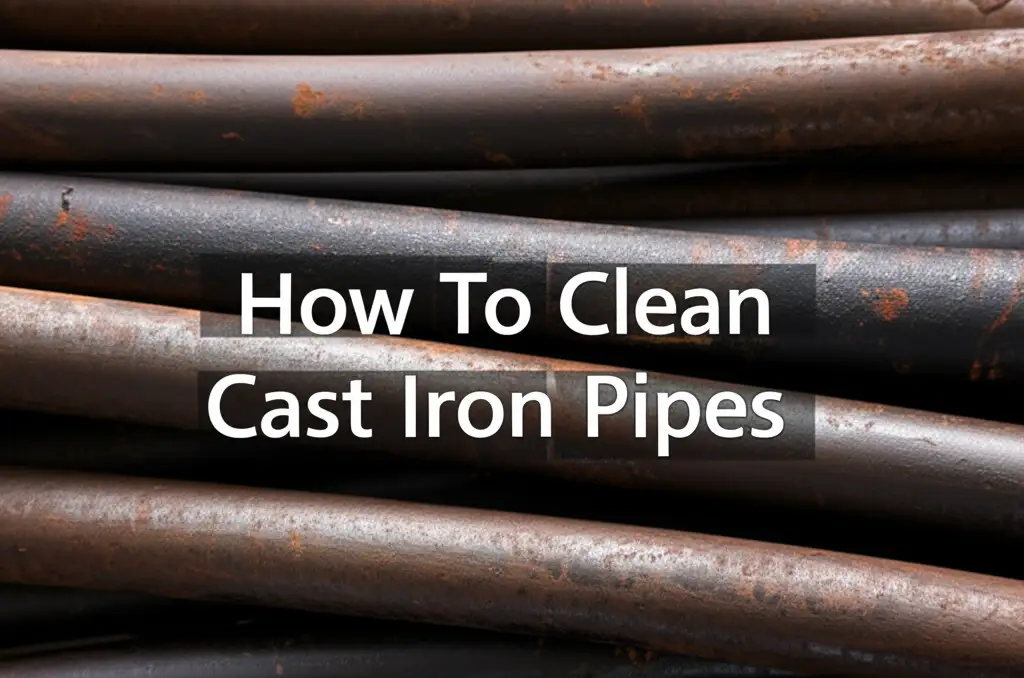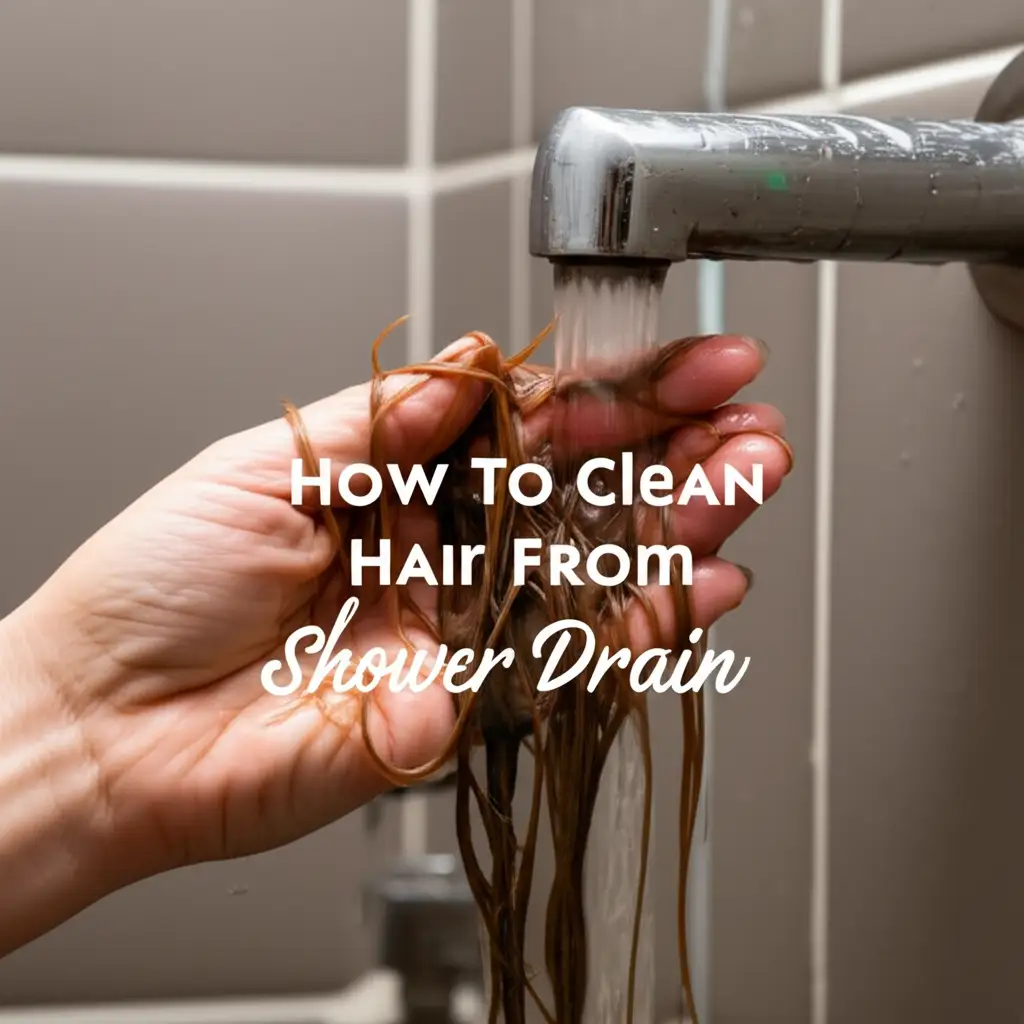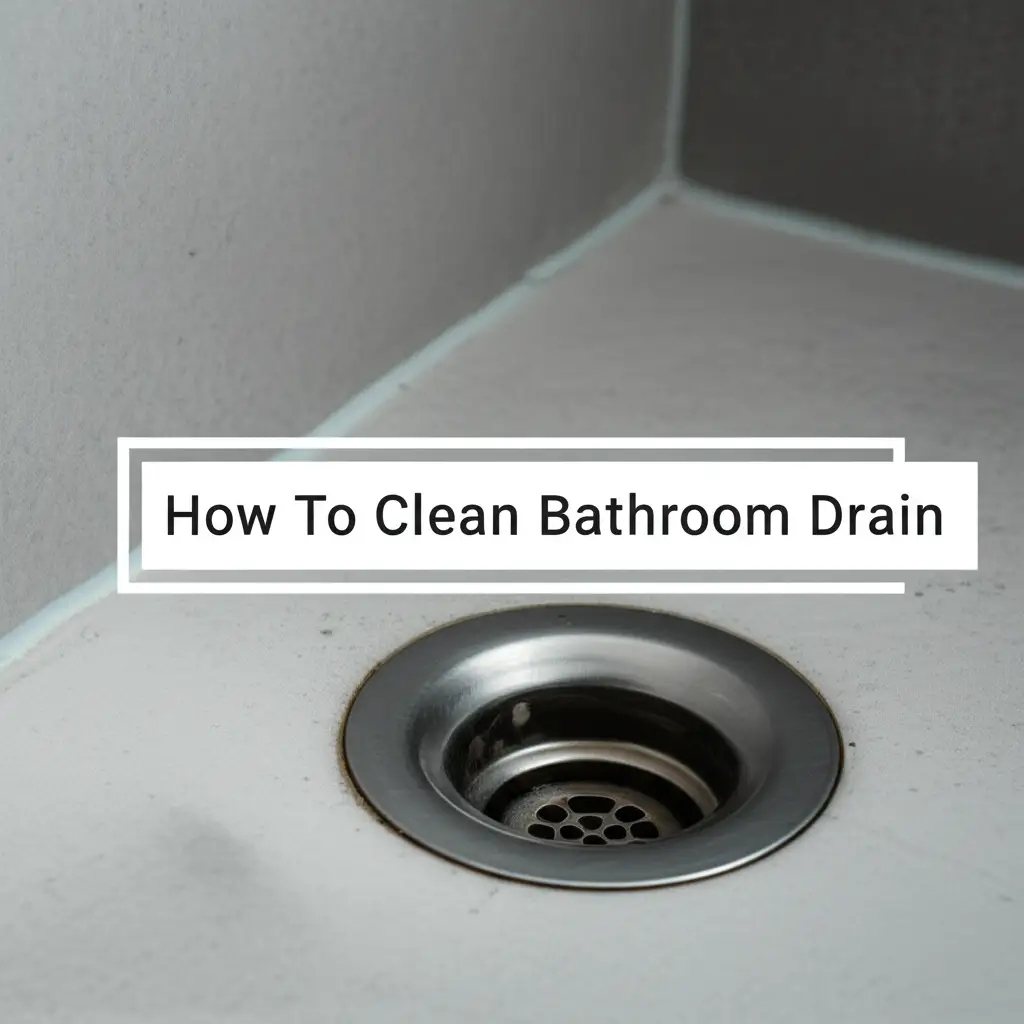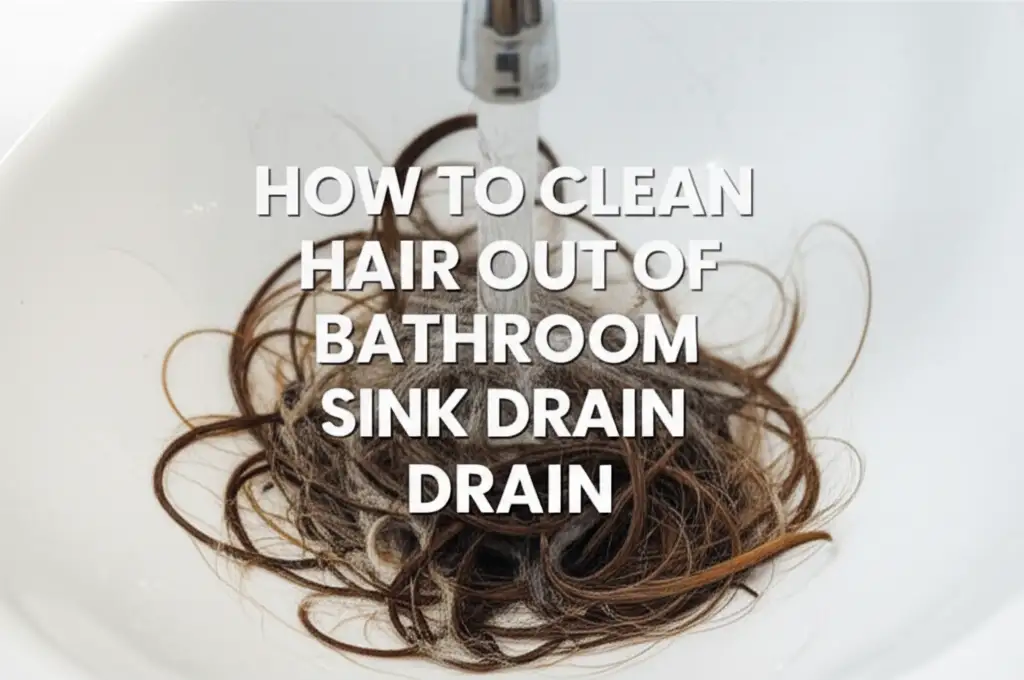· Home Maintenance · 19 min read
How To Clean Grease From Drain Pipes

Tackle Grease: How to Clean Your Drain Pipes Effectively
Do you notice water draining slowly from your kitchen sink? Perhaps an unpleasant smell comes from the pipes? Chances are, grease buildup is the culprit. We all pour oils and fats down our drains sometimes. This common habit leads to blockages over time.
Learning how to clean grease from drain pipes becomes essential for every homeowner. Neglecting these clogs can lead to bigger plumbing issues. It affects drainage and overall pipe health. This article explores effective ways to remove grease. We will cover natural remedies, mechanical tools, and when to call a professional. You will also learn prevention tips. Keep your drains flowing freely and avoid future headaches.
Takeaway
- Act Early: Address slow drains and odors quickly to prevent full clogs.
- Use Natural Methods: Hot water, baking soda, and vinegar are safe first steps for grease removal.
- Consider Mechanical Tools: A drain snake or plunger can clear tougher blockages.
- Prevent Future Buildup: Proper grease disposal is key to maintaining clear pipes.
- Know When to Call a Pro: Seek professional help for persistent or severe clogs.
A clear, concise answer to the main query:
You can clean grease from drain pipes by flushing with hot water, using a baking soda and vinegar solution, or employing mechanical tools like a drain snake. For severe blockages, chemical drain cleaners or professional plumbing services offer solutions. Regular prevention prevents future accumulation.
Understanding Grease Buildup in Drain Pipes
Grease is a common problem in drain pipes. It causes many plumbing issues. When you pour cooking oils, fats, or butter down the sink, it does not just disappear. Liquid grease cools as it moves through your pipes. This cooling causes the grease to solidify.
Once solid, the grease sticks to the inner walls of your drain pipes. Over time, more grease builds up. Other debris like food particles, soap scum, and even hair can stick to this greasy lining. This process forms a stubborn, sticky blockage. This buildup narrows the pipe’s diameter. It restricts water flow significantly.
Different types of grease contribute to this problem. Animal fats from meat trimmings are particularly notorious. Vegetable oils and dairy products also contribute. Even small amounts of grease, consistently poured down the drain, add up. These materials combine to create a resilient clog. This clog makes your drains slow. It can eventually stop water flow completely. Understanding this process helps you prevent it. You can take better steps to protect your pipes. Proper disposal of grease is crucial for healthy plumbing.
What Happens When Grease Solidifies?
When hot grease enters a cold pipe, its temperature drops fast. This drop causes the liquid fat to change state. It becomes a thick, waxy solid. This solid material clings to pipe surfaces. It creates a rough texture inside the pipe. Other waste materials easily attach to this surface.
The buildup reduces the internal space of the pipe. Water struggles to pass through. This leads to slow drainage at first. Eventually, it can cause a complete blockage. The clog becomes harder to remove over time. It can also trap foul odors. These odors come from decomposing food particles within the grease.
Early Signs of Grease Clogs
It is important to spot early signs of grease clogs. Catching them early makes cleaning easier. One of the most common signs is slow drainage. You might notice water standing in your sink after washing dishes. It takes longer than usual for the water to disappear. This indicates a partial blockage.
Another clear sign is a foul odor. Grease clogs often trap food particles. These particles decompose over time. This decomposition releases unpleasant smells. The smell might be musty or rotten. It comes from your drain opening. It can spread throughout your kitchen. These odors are a direct signal of active bacterial growth in the clog.
Gurgling sounds from your drain can also mean a problem. As water tries to pass a clog, air gets trapped. This trapped air makes gurgling noises. You might hear this sound when water goes down the drain. It can also happen when using other plumbing fixtures nearby. These sounds indicate air pressure changes. This happens because of a restricted flow path. Ignoring these early warnings can lead to a full blockage. A full blockage means no water drains at all. Acting fast prevents a minor issue from becoming a major one. It saves you time and money on costly repairs.
Recognizing Persistent Odors
Persistent odors from your drain signify a deeper issue. The smell may be more noticeable after using the sink. This is because water disturbs the decomposing material. These odors are not just unpleasant. They are a sign of bacterial activity within the clog. The bacteria break down trapped food particles and grease. This process releases foul-smelling gases. A regular drain cleaning should address this. If the smell returns quickly, the clog is still there.
Slow Drainage and Backups
Slow drainage is often the first visible symptom. You might find yourself waiting longer for water to empty. This happens because the pipe diameter shrinks due to grease. Water flow becomes restricted. In severe cases, water might even back up into your sink. This means the clog is almost complete. A backup shows you need immediate action. It can lead to overflow and water damage. Address these issues quickly to prevent further damage.
Essential Tools and Materials for Grease Removal
Having the right tools helps you clean grease from drain pipes effectively. You do not need many specialized items. Basic household supplies and a few simple plumbing tools are often enough. Hot water is your first line of defense. It helps melt fresh grease. Dish soap acts as a degreaser. It breaks down fats. These two items are usually found in any home.
Baking soda and white vinegar create a chemical reaction. This reaction helps dislodge clogs. They are safe for most pipes. A plunger is useful for creating pressure. This pressure can push clogs through. Make sure you use a proper sink plunger. It should seal around the drain opening. For tougher clogs, a drain snake is invaluable. This long, flexible tool can reach deep into pipes. It physically breaks up or pulls out blockages. Different types of drain snakes exist. Handheld models are good for home use.
When working with drains, always wear rubber gloves. This protects your hands from dirty water and cleaning solutions. Have a bucket ready too. It catches any water or debris that comes out. You might also need old towels. They help clean up spills. Gathering these items before you start saves time. It makes the cleaning process smoother.
Household Cleaning Agents
For lighter grease buildup, you can use common household items. Hot water and dish soap are a great starting point. The hot water melts the grease. The dish soap helps break down the fat molecules. Pouring hot water down the drain regularly can prevent clogs. For more stubborn clogs, baking soda and white vinegar are effective. This combination creates a fizzy reaction. This reaction helps loosen the grease. It also helps remove odors. These solutions are eco-friendly and safe for your pipes. They are a good alternative to harsh chemical cleaners.
Mechanical Plumbing Tools
When natural methods fail, mechanical tools are the next step. A basic plunger can dislodge many clogs. Ensure the plunger creates a strong seal over the drain. Plunge firmly and repeatedly. For deeper or more stubborn clogs, a drain snake (or auger) is effective. This tool has a long cable with a corkscrew tip. You feed it into the drain. The tip breaks up or hooks onto the clog. You then pull the clog out. Drain snakes come in various lengths. A small hand-crank snake is suitable for most household drains. Using these tools requires some caution. Read the instructions carefully to avoid pipe damage.
Natural Home Remedies for Grease Clogs
Many people prefer natural methods to clean grease from drain pipes. These methods are safe for your plumbing system. They are also gentle on the environment. One simple method uses very hot water. Boiling water can melt grease. Be careful if you have PVC pipes. Extremely hot water can damage them. For most metal pipes, boiling water is fine. Pour it slowly down the drain. Repeat this a few times. This helps flush away minor grease buildup.
Another popular home remedy combines baking soda and vinegar. First, pour one cup of baking soda down the drain. Let it sit for a few minutes. Then, pour one cup of white vinegar. You will see a fizzing reaction. This reaction helps break down the grease. It also loosens other debris. Let this mixture sit for at least 30 minutes, or even overnight. After the waiting period, flush the drain with hot water. This method is effective for moderate clogs. It also helps with foul odors.
Using salt and baking soda is another option. Mix half a cup of salt with half a cup of baking soda. Pour this mixture into the drain. Follow with hot water. The abrasive nature of salt helps scour the pipe walls. These natural solutions are often effective for regular maintenance. They are also good for clearing minor clogs. Always exercise caution. Do not mix different cleaning products. This can create dangerous fumes.
Hot Water and Dish Soap Flush
This is a simple method for minor clogs. First, boil a large pot of water. If you have PVC pipes, use hot tap water instead. Very hot water can soften PVC. Next, pour a few squirts of liquid dish soap down the drain. Then, slowly pour the hot water into the drain. The hot water helps melt the grease. The dish soap works to break down the fatty substances. This combination helps push the grease through the pipes. Repeat this process a few times. This method works best for fresh, superficial grease buildup.
Baking Soda and Vinegar Treatment
This popular method is powerful and safe. First, pour one cup of baking soda down the drain. Let it sit for about 10-15 minutes. This allows the baking soda to start absorbing odors and oil. Next, pour one cup of white vinegar into the drain. You will see a fizzy reaction. This reaction is a natural cleaner. It helps loosen grease and other debris. Place a stopper over the drain opening. This keeps the reaction contained. Let the mixture work for 30 minutes to an hour. For tough clogs, leave it overnight. Finally, flush the drain with hot water. This will clear away the loosened grease. This method is effective for many types of gunk out of bathroom sink drain.
Mechanical Methods for Stubborn Grease Clogs
When natural remedies are not enough, mechanical methods can clear stubborn grease clogs. These tools provide physical force. They break up or remove the blockage directly. A plunger is usually the first mechanical tool to try. It works by creating suction and pressure. This force can dislodge the clog. To use a plunger effectively, fill the sink with a few inches of water. This helps create a good seal. Place the plunger cup over the drain opening. Ensure it completely covers the drain. Plunge vigorously for about 20-30 seconds. Pull the plunger up sharply. This action creates strong suction. Repeat this process several times. If water drains, you have succeeded. Sometimes, you may need to clear other drains, such as hair from shower drain with a plunger.
For deeper or more resilient clogs, a drain snake is your best bet. A drain snake is a long, flexible cable. It has an auger or hook at its end. You feed the snake into the drain opening. Push it gently until you feel resistance. This resistance indicates the clog. Once you reach the clog, crank the handle. This rotates the auger head. It breaks up the grease. The auger can also grab onto the clog. You can then pull it out. Always wear gloves when using a drain snake. Drains can contain unpleasant debris. Be careful not to force the snake. Forcing it can damage your pipes. These mechanical methods directly address the physical blockage. They offer a powerful solution.
Using a Plunger Effectively
A plunger can be surprisingly effective for grease clogs. Ensure you have a good quality cup plunger. Fill the sink with enough water to cover the plunger cup. This creates a seal. Position the plunger firmly over the drain. Create a tight seal. Push down and pull up rapidly. Do this about 15-20 times. The rapid changes in pressure can dislodge the grease. Listen for the sound of rushing water. This means the clog has moved. If the water drains slowly, repeat the process. Sometimes, a few rounds are necessary. A plunger works best when the clog is not too far down the pipe.
Operating a Drain Snake (Auger)
A drain snake is a powerful tool for stubborn clogs. Start by removing the drain cover. Insert the snake’s cable into the drain. Push it slowly and steadily. Do not force it. You will feel resistance when you hit the clog. Once you hit the blockage, tighten the set screw on the snake. Turn the handle clockwise. This rotates the cable. The spinning action helps the auger tip break up the grease. It can also hook onto the material. Pull the snake back slowly. If you feel resistance, you have likely snagged the clog. Pull the material out. Clean the snake as you retract it. Dispose of the removed debris properly. Using a snake effectively can clear tough black stuff in sink drain.
Chemical Drain Cleaners: Use with Caution
Chemical drain cleaners offer a quick fix for grease clogs. They contain strong chemicals. These chemicals react with the clog. They often generate heat. This heat can melt grease and break down other organic matter. However, using these products comes with risks. They can be very corrosive. This means they can damage your pipes. Especially older pipes or those made of PVC. They can also harm septic systems. The chemicals kill beneficial bacteria. These bacteria help process waste.
Safety is a big concern with chemical drain cleaners. Always wear protective gloves and eyewear. Ensure good ventilation. Chemical fumes can be harmful if inhaled. Never mix different chemical cleaners. This can create dangerous gases. Always follow the product instructions carefully. Do not use these cleaners if you have already tried other methods. For example, if you have used a plunger. Plunging after chemicals can cause harmful splashes.
While they may clear a clog, they do not address the root cause. They might provide temporary relief. But grease buildup will likely return. They also can harden existing clogs. This makes professional removal harder. Consider chemical drain cleaners as a last resort for DIY. Prioritize natural and mechanical methods first. For a general understanding of maintaining pipes, understanding how to clean calcium buildup in pipes is also helpful.
Types of Chemical Cleaners
Chemical drain cleaners fall into several categories. Caustic cleaners use lye or potassium hydroxide. They create heat and dissolve organic matter. Oxidizing cleaners use bleach or peroxides. They release gas to break down clogs. Acidic cleaners are very corrosive. They are generally for professional use. Enzyme cleaners are less harsh. They use bacteria to digest organic material. These work slowly. They are better for maintenance than clogs. Each type has different risks. Choose wisely based on your pipe material and clog type. Always read the label before use.
Risks and Safety Precautions
Chemical drain cleaners pose significant risks. They can cause chemical burns to skin and eyes. Their fumes can irritate lungs. Never mix different cleaners. This can produce toxic gases. Using them too often can corrode pipes. This leads to leaks. Old or damaged pipes are especially vulnerable. If you have a septic system, avoid these cleaners. They can destroy the necessary bacteria. Always ensure good ventilation. Wear gloves and eye protection. Keep children and pets away. If a clog persists, do not keep pouring chemicals. Call a professional instead.
Professional Help: When to Call a Plumber
Sometimes, DIY methods are not enough to clean grease from drain pipes. Knowing when to call a professional plumber saves you time and prevents further damage. If your drain is completely clogged and no water drains, it is time for a pro. This suggests a severe blockage that DIY tools cannot clear. Persistent foul odors indicate a deep-seated problem. If smells return quickly after cleaning, the clog is still present. A plumber has specialized tools.
Repeated clogs are another sign. If you frequently experience slow drains or blockages, there is a systemic issue. A professional can identify the root cause. They can offer a lasting solution. This might involve a camera inspection. This inspection allows them to see inside your pipes. It reveals the exact nature and location of the clog. Plumbing issues affecting multiple fixtures suggest a main line problem. This is beyond typical homeowner repairs.
Plumbers use powerful equipment. They have industrial-grade drain snakes. They also use hydro-jetting. Hydro-jetting uses high-pressure water to blast away clogs. This method cleans pipes thoroughly. It removes even stubborn grease buildup. It also scours pipe walls clean. This prevents immediate re-clogging. Calling a plumber might seem costly. But it prevents future damage. It ensures your plumbing system works correctly. It offers peace of mind.
Signs You Need a Plumber
Several clear signs indicate it is time to call a professional plumber. If water stands in your sink for more than an hour after trying remedies, the clog is severe. If you notice water backing up into other sinks or tubs when using one, it suggests a main line blockage. Gurgling sounds from multiple drains also point to a larger issue. When foul odors persist despite your efforts, a deep-seated clog is likely. Lastly, if you have tried several DIY methods without success, a plumber’s expertise is necessary. They have advanced tools like drain cameras. These tools identify the exact problem.
Advantages of Professional Drain Cleaning
Professional drain cleaning offers several key advantages. Plumbers use powerful tools. These include large drain augers and hydro-jetting equipment. Hydro-jetting blasts away all buildup. It removes grease, scale, and debris. This cleans pipes thoroughly. Professionals accurately diagnose the problem. They use video inspections to see inside your pipes. This pinpoints the clog’s location and type. It ensures a complete solution. Professional cleaning prevents future clogs. It restores full drainage capacity. It also prolongs the life of your pipes. This service saves you from repeated clogs and potential water damage. It gives you long-term peace of mind.
Preventing Future Grease Buildup
The best way to deal with grease in drain pipes is to prevent it. Simple habits can make a big difference. Never pour cooking oil or grease down any drain. This includes bacon grease, vegetable oil, and butter. Allow hot grease to cool and solidify. Once solid, scrape it into a non-recyclable container. An old coffee can or milk carton works well. You can then dispose of it in the trash. This simple step stops grease from entering your plumbing system.
Always wipe greasy pans and plates. Use a paper towel to wipe them clean. Do this before washing them. This removes most of the residual grease. Even small amounts add up over time. Hot water and dish soap do not magically make grease disappear. They only help it travel further down the pipes before it cools and solidifies. Using a drain screen or strainer is also helpful. These devices catch food particles before they enter the drain. They can be easily cleaned.
Regular flushing with hot water can help. Once a week, pour a large pot of very hot water down your drains. This helps melt any minor grease films. It flushes them away before they can build up. Some people use a weekly flush of baking soda and vinegar as preventative maintenance. This keeps pipes fresh. It discourages grease accumulation. By adopting these simple practices, you can keep your drain pipes clear. You avoid the hassle and expense of clogs. This is crucial for maintaining a healthy plumbing system.
Proper Grease Disposal Techniques
Proper grease disposal is crucial for preventing drain clogs. Never pour liquid grease down any sink or toilet. This is the most important rule. Instead, allow hot grease to cool and solidify. Once firm, scrape it into a container. An empty milk carton, coffee can, or glass jar works well. Seal the container. Then, discard it in your regular trash. For small amounts of grease, like from a greasy pan, wipe it with a paper towel. Then, throw the paper towel in the trash. This prevents tiny grease particles from entering the drain. You can also research local recycling programs. Some areas offer grease recycling. Proper disposal keeps your pipes clear. It also helps the environment.
Regular Maintenance and Best Practices
Regular maintenance keeps your pipes free of grease. Weekly flushing with hot water helps. Pour a large pot of very hot water down kitchen drains. This melts minor grease deposits. Consider a monthly baking soda and vinegar flush. This helps prevent buildup and odors. Use drain screens or strainers in all sinks. These catch food particles before they go down the drain. They are easy to clean. Avoid using garbage disposals for large amounts of grease. The disposal can grind grease into smaller pieces. These pieces still congeal in the pipes. Regularly inspect your drains for slow drainage. Address minor issues quickly. These simple habits save you from costly clogs. You might also want to look into how to clean grease off stainless steel in your kitchen for complete cleaning.
Conclusion
Cleaning grease from drain pipes is a common household task. Understanding how grease causes clogs is the first step. Recognizing early signs like slow drainage and foul odors helps you act fast. You can use simple home remedies. Hot water, dish soap, baking soda, and vinegar are safe options. For tougher clogs, mechanical tools like plungers and drain snakes offer powerful solutions. Chemical drain cleaners can work. But they require careful use due to their corrosive nature and potential risks.
The best approach is always prevention. Never pour grease down the drain. Properly dispose of all cooking oils and fats. Wipe greasy pans before washing them. Regular maintenance flushes can also help keep your pipes clear. If a clog persists or if you notice multiple drain issues, calling a professional plumber is the wisest choice. They have the expertise and tools to clear severe blockages safely. By following these guidelines, you can maintain healthy, free-flowing pipes. This avoids the inconvenience and expense of a serious plumbing problem. Keep your home running smoothly with clear drains.
- drain cleaning
- grease clogs
- pipe maintenance
- kitchen drains
- DIY plumbing




